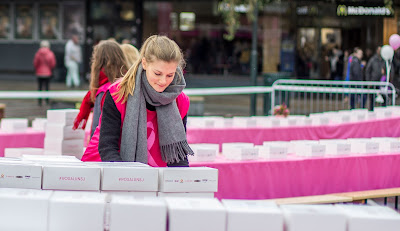Take for example the spot healing brush. What does it do and how does it work?
The spot healing brush is the default healing tool in Photoshop and can be used to clone areas from an image and blend the pixels from the sampled area seamlessly with the target area. The basic principle is that the texture from the sample area is blended with the color and luminosity surrounding wherever you paint. The main difference between this and the standard healing brush is that the spot healing brush requires no source point.
source: http://www.photoshopforphotographers.com/
After watching this movie from Tutvid, I discovered the healing brush tool. Cue: practise time!
I practised with a picture I downloaded from Pixabay:
The healing brush can be found with the J keyboard shortcut or in the Tools menu
The principle of the healing brush is actually very simple: find a pimple or blemish and sample a piece of skin thats fits well (preferably close to the spot) and simply paint over the spot you want to 'heal'. That's it!
I prefer to keep it natural though. Not go over the top.
And you guys probably know by now that I wasn't done after that. I sharpened the image with the use of a high pass filter and made the cap a bit more colourful. And this was the result of my practising the healing brush tool:
Sometime over the next week I'll be posting a follow-up on this post. I'll be working with this picture and show you how dodge and burn can improve this picture even further.
Don't forget to follow us on Facebook or 500px. And have you already discovered our brand new Facebook page Humans of the Nordic Region!


















































